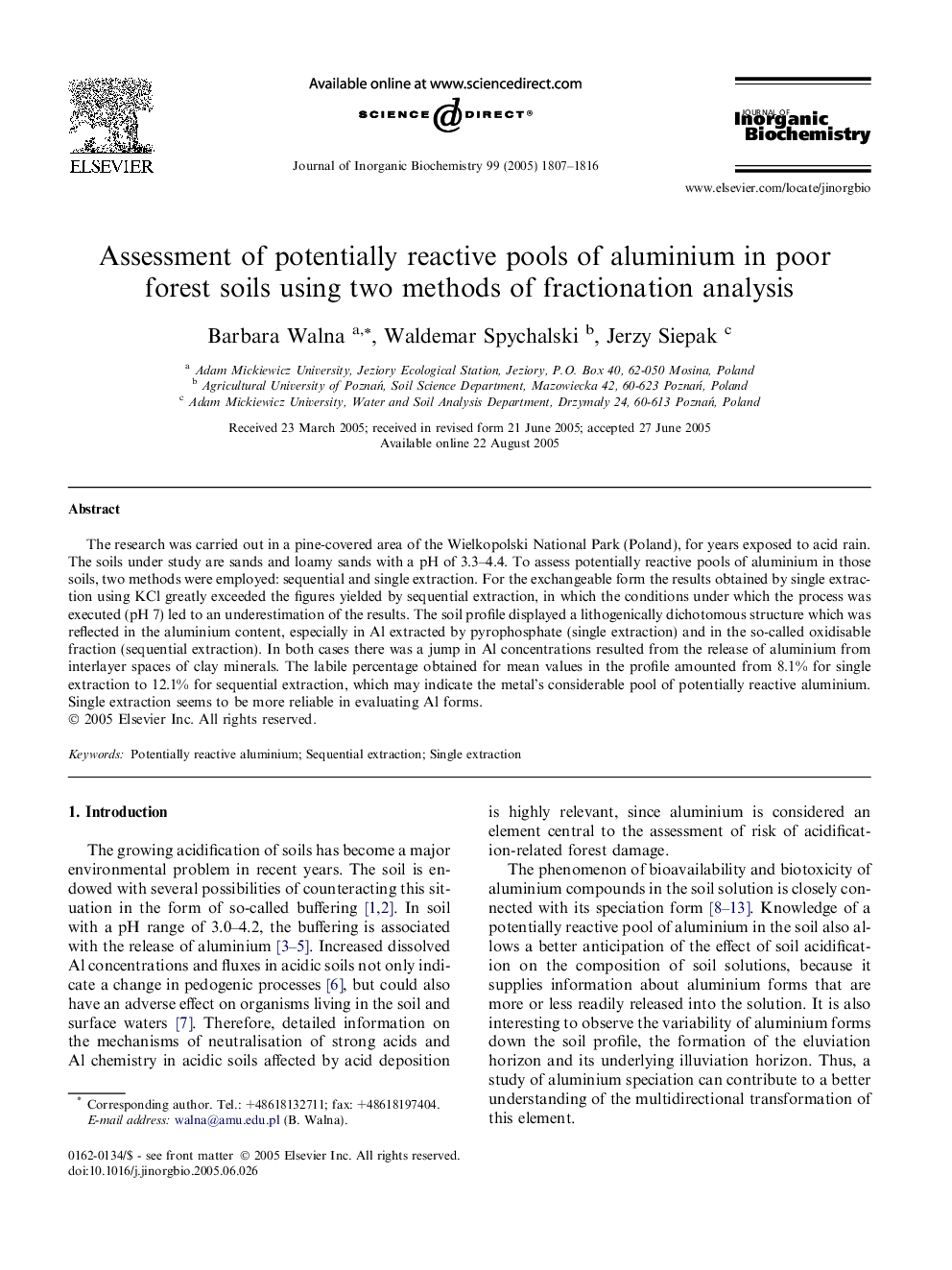| Article ID | Journal | Published Year | Pages | File Type |
|---|---|---|---|---|
| 10574477 | Journal of Inorganic Biochemistry | 2005 | 10 Pages |
Abstract
The research was carried out in a pine-covered area of the Wielkopolski National Park (Poland), for years exposed to acid rain. The soils under study are sands and loamy sands with a pH of 3.3-4.4. To assess potentially reactive pools of aluminium in those soils, two methods were employed: sequential and single extraction. For the exchangeable form the results obtained by single extraction using KCl greatly exceeded the figures yielded by sequential extraction, in which the conditions under which the process was executed (pH 7) led to an underestimation of the results. The soil profile displayed a lithogenically dichotomous structure which was reflected in the aluminium content, especially in Al extracted by pyrophosphate (single extraction) and in the so-called oxidisable fraction (sequential extraction). In both cases there was a jump in Al concentrations resulted from the release of aluminium from interlayer spaces of clay minerals. The labile percentage obtained for mean values in the profile amounted from 8.1% for single extraction to 12.1% for sequential extraction, which may indicate the metal's considerable pool of potentially reactive aluminium. Single extraction seems to be more reliable in evaluating Al forms.
Related Topics
Physical Sciences and Engineering
Chemistry
Inorganic Chemistry
Authors
Barbara Walna, Waldemar Spychalski, Jerzy Siepak,
